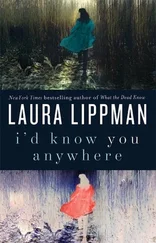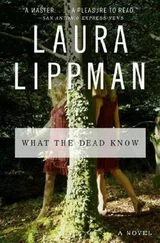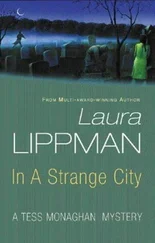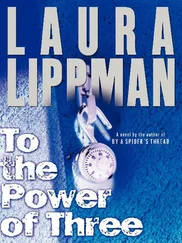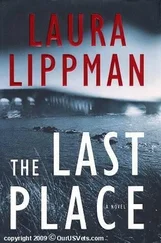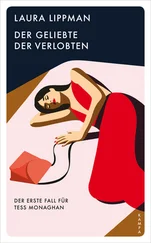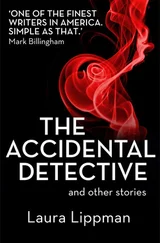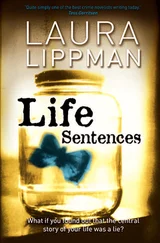He parked around the corner from Café Hon, a place where Tess indulged her frequent need for comfort food. She found a parking spot a block up, then sprinted toward the Avenue, as 36th Street was known here. Adam Moss’s tall figure was on the south side of the street, heading east, his navy wool coat open despite the chill in the air. She let him stay a block ahead, trying to look as if she were window shopping, then trying not to be distracted by the Avenue’s wares. Antiques left her cold, but how she yearned for a painted screen scavenged from one of her East Baltimore neighbors, or one of those old tins from the sausage company that shared her dog’s name. It would be even better than a neon sign that said Human Hair. But $75 seemed a bit high just for the honor of owning an Esskay can that boasted its contents were made with pure lard.
Adam Moss was not a window shopper. He walked purposefully, without a single sidelong glance for the people or places he passed. He was almost to Chestnut Street before he turned into a small shop, one of the galleries that had begun springing up in the neighborhood. In Tess’s experience, a neighborhood could not pretend to hotness until galleries began to open there. This gallery had no name, not that Tess could see, but it was brightly lit and its front windows had two large, abstract oil paintings on display-angry, red-hued triangles that reminded Tess vaguely of mountain ranges. Or knives.
She crossed to the other side of the street and found a convenient bus stop bench. People still waited for buses, didn’t they? Plus, she had the advantage of being in shadow, while the gallery was so bright it was like peering into a diorama. It was empty, except for a striking young woman. Thin, confident enough to wear her hair cut close to the scalp, like a feathery cap-together, she and Adam Moss were almost unbearable in their pulchritude. Yet there was no sexual buzz between them. The kiss Adam gave her was light, almost fatherly. And while they stood very close as they spoke, their body language revealed only matter-of-fact comfort.
They talked for no more than five minutes. Another light kiss, and Adam was gone, heading back down the Avenue. Tess was torn. She had intended to follow him as long as he was out. Yet here was a lead, someone who knew him, and had no idea who she was. What if the girl wasn’t there when she came back another day? It would be much harder to track her down outside the gallery, without giving herself away.
Time to become an art lover, her gut told her.
She waited a few minutes, giving Adam time to find his car and leave the neighborhood. She tucked her braid down the back of her coat. Later, if this visit got back to Adam Moss, she could imagine him asking: “Did she wear her hair in a pigtail?” Tess knew people were not naturally observant, because she was still learning how hard it was to get details right. The woman she was about to meet would remember Tess’s hair as being collar length, or short. She also would remember Tess’s tortoiseshell glasses-she had a pair with clear glass that she carried with her, for moments just like this.
Instead of a bell, the gallery door had a rainstick attached, so it made a soft, whooshing sound when Tess pushed her way in and began browsing.
For all Crow’s tutelage, she was still the sort of museum goer given to tiresome pronouncements that she might not know much, but she knew what she liked. The abstract and minimalist work here struck her as worthy of admiration, but it didn’t engage her emotionally. Everything-the paintings, sculptures, the jewelry in a small glass case at the front-was cold and metallic, perfect yet mildly cruel looking.
As was the proprietor, close up. No one that young should look that hard , Tess thought. Her face was like a well-cut diamond, with sharp cheekbones, pointed chin, and eyebrows waxed into stiletto-thin arches. Amber eyes and a full lush mouth gave the face the flashes of yellow and red that diamonds sometimes have, but added no warmth.
“May I help you?” she asked, in a tone suggesting Tess was beyond anyone’s help.
“I’m in this neighborhood all the time, but I never noticed this shop before,” Tess said. “Couldn’t help wanting to check it out.”
“The gallery has been open only a month,” the woman said.
“Are you the owner?”
The question threw her, but only for a moment. “I’m in charge, I make all the selections.”
“I have a friend who owns a gallery in San Antonio. Carries all this wild Day of the Dead stuff. It’s creepy, until you get used to it.”
“Day of the Dead? Oh, you mean folk art.” Her tone was derisive.
“What do you call this place? I didn’t see anything outside.”
“It doesn’t have a name,” the woman said. “Names are essentially phony. I won’t carry artists who insist on naming their work.”
Tess looked around and saw the art was all labeled by numbers. Not sequentially, of course-that would have been too easy. The numbers appeared to have been chosen at random, although Tess supposed the proprietess would insist the #17 canvas could never be, say a #9 or #131.
“Do you have a name?”
“I call myself Jane Doe,” the woman said.
It stung, hearing that name, especially when it was used so casually, so carelessly. Jane Doe was Gwen Schiller; Gwen Schiller was Jane Doe.
“Not very original.”
“That’s the point.”
“No, I mean calling yourself Jane Doe as an artistic statement isn’t original. Didn’t the lead singer of the old punk band X call himself John Doe, way back in the 1980s?”
The woman shrugged ever so slightly. Her thin arms were loaded with bracelets, so the movement made her ring like a wind chime. “Jane Doe is only one of my names. It fit my mood today. Come back tomorrow, and I’ll be someone else.”
Like Princess Langwidere from Ozma of Oz , Tess thought. Born with a detachable head, the princess changed heads daily, according to her whim. Her heads were numbered, not named, as Tess recalled. Sometimes, Langwidere picked a bad head, and she became unbearably peevish.
“You know, I’m in business for myself. So is my aunt, and one of my best friends. Can I give you some advice? This snotty attitude might work in some other cities, but people in Baltimore are not going to buy art from someone who makes them feel stupid. So thaw, okay? Where are you from, anyway, that you have so much ’tude?”
The last question had been the whole point of Tess’s little monologue, tucked in so it would seem casual, impromptu. It didn’t work.
“Biography doesn’t interest me. People are boring. Including me.”
“That guy who was just in here didn’t look so boring. Boyfriend?”
“Jane Doe” retreated behind the sales counter, a too-precious little desk with spindly legs and a frosted glass top.
“Who are you?” she asked, her voice stripped of its snotty veneer. “Who sent you here?”
“I find names boring,” Tess dead-panned.
“I fulfilled my contract,” the woman said. “We’re not supposed to be hassled, after . It’s not my fault, what happened.”
She had pulled a pair of scissors from the desk, but her hand was shaking so hard that Tess felt more pity than fear.
“I’m not anybody. I’m just a Christmas shopper trying to make conversation. Who do you think I am?”
“Please leave,” the woman said. “Once it’s over, it’s over. That’s what they promised.”
“I’m not affiliated with any ‘they,’” Tess said, trying to make her voice as neutral as possible. “I don’t know who you are. I don’t know anything about you, or what you’re talking about.”
“Get out, get out, get out, get out.” The woman’s voice rose until it was a feral shriek. Shoppers on the Avenue glanced up, startled. Public brawls were not unknown in Hampden, but they were usually confined to side streets, on hot summer nights, when too much beer had been consumed.
Читать дальше

